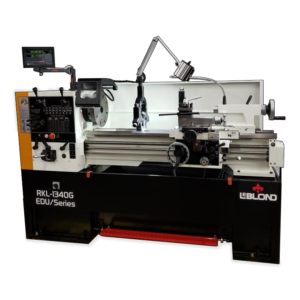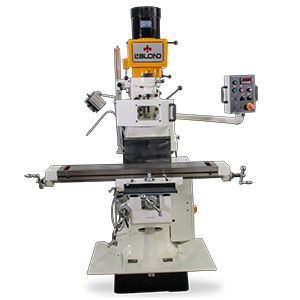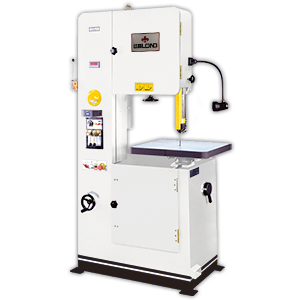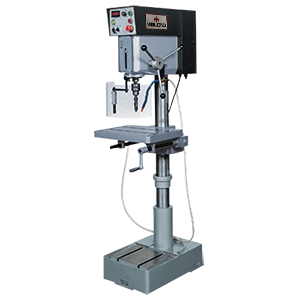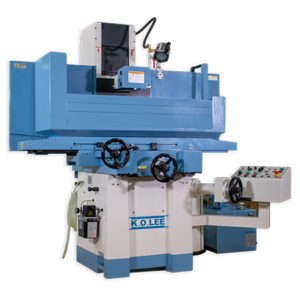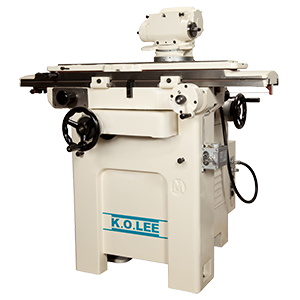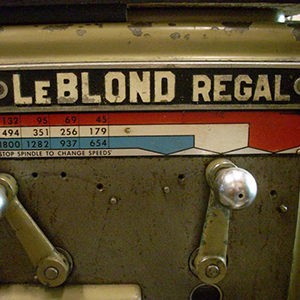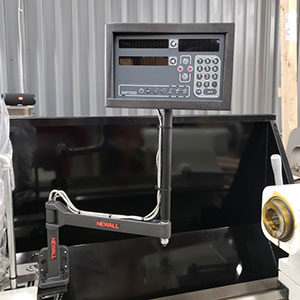Debating whether to go with a LeBlond variable speed or gearhead lathe? Check out this video that spells out the differences. LeBlond Service Technician Christopher Smith also covers routine maintenance suggestions for either a LeBlond EVS or gearhead lathe to keep your machine running optimally for ages. If you have questions, call +1 (888) 532-5663 and select Option 2 (M-F 8am – 5pm ET).
VIDEO TRANSCRIPTION
Hey guys! Christopher Smith here, Service Technician with LeBlond. We’re going to talk to you today a little bit about our gearhead lathes, and our variable speed lathes, and some of the differences and the pros and the cons.
As you can see, this movement speed dial I can quickly change the speed. Which makes it nice to do on the fly when you’re working with your part and you can find that sweet spot on that speed there to achieve the good quality finish that you’re after.
What else is nice about this machine, so with the control drive on it, and what you would see with a new LeBlond quote from us, is we offer the Newall Digital Readout systems. You can get the E70 CSS Constant Surface Speed unit. Now, what that does is it has another computer system that talks with the drive that you would set a program. So, as you’re cutting and your diameter’s getting smaller on your part, and you need a certain speed to keep achieving that finish. The machine, if you program, it will speed up to keep the speed going to give you that Constant Service Speed to get your good quality finished. Now, also, if you didn’t want to get that technical. We also have the Newall DP700, just your standard unit X and Y axes. There is some program in it, not as technical as the E70 unit, for programs of some of your tooling and some other small programs that you can do as well.
A few of the downsides, cons to it, is you can see here, there’s only two speed ranges. You got your low end and your high end. So you do lose a little bit of cutting torque. But what you do get is you get the 2,500, you get more RPMs out of this than you would with the gearhead system. Commonly, that what I do see a lot though, is just shifting between the gears right now, they’re lined up pretty well. But the biggest thing as an operator, what you want to do is give this a little bit of spin while you’re changing gears so it flows nicely. Cause what’s going to happen is you just have that high and low gear, and they’re going to wind up hitting with the gear on the spindle itself. And you could cause a nick, you get that nick on there, and then you’re just going to have a constant tick, tick, tick, while you’re running.
And if you’re running a high speed, it can be super loud it sounds like the machine is blowing up. That is not the case. All it is just a little nick on the gear, take the head, cover off, find that spot on the gear, pile it up, some memory cloth or a diamond file, something nice and smooth, smooth it up and you’re good to go again. Go over here to the gearhead.
Now the gearhead, to me, it’s like the workhorse. So with the extra gears that you have inside of it, it gives you a bit of heavier cutting torque. Now you do lose some RPMs. You get only 2000 RPM out of it. And also with it to change speeds, you’ve got to stop the machine and you can only go through any of these speeds, you can’t just fine tune it. So try and maybe find that that finish might be a little bit tougher, but not that bad at all. Great cutting machine.
The DP700 is the unit you would get with it as well. It doesn’t have the drive system talk and with the variable speed and all that. So just your standard DP700 unit would come with it. With the better cutting torque going through the gears, you do still have the same high and low gear inside the head stock as you do with the EVS. But just a basic good cut and lay. So I’ve got a couple lathes over here with the headstock cover off, so we can look inside and you can see what I’m talking about with some of these gear systems. And we’ll go over a couple other things, just come with me over this way.
Right now, looking at the variable speed lay. Then the first thing you would have to do is remove the control box out of the way, just to screw on the side. And the first thing you notice once you take the cover off is this big manifold up here. So as soon as you turn the machine on, you’ll hear the hydraulic pump running and what that’s going to do, that’s going to be constantly feeding lubrication oil all through here, the hydraulic oil, keeping your gears in all the bearings inside the headstock, all nice and lubricated and, and great working order. Now, like I said, with worrying about knocking the gears right there, you can see that it’s not lined up. So if you were to slam that real hard, you’re going to put a nick on that gear, if you slam it hard enough. So what you want to do, just move your faceplate or chuck to it up.
But if you do slam it and you do start hearing that head knocking sound, take the head cover off, put it in a neutral position and spin the shafts around, look for that spot and it’ll show up. You’ll see it. It’ll be completely discolored or you’ll even see a deep groove cut into the gear, sometimes I’ve seen that. And you’re just going to want to clean those up, put it all back together and go about your day. All right, let’s go over to the gear head and take a look at it. So with your gear head, you can see it doesn’t have that manifold system. What you have here is this plate on top, it’s kind of like the trough, the oil trough. And what that’s going to do when the machine is running. This is going to give what we call a splash bath. It’s going to be throwing, slinging oil all over the place, which is going to fill this trough up. And it’s going to disperse out through these hoses onto the bearings, keeping everything well, lubricated. Plus, once thing’s running, it’s going to be raining down the oil.
Now what you’ll also notice is this magnet on here. And what that does, so over years of running, there’s going to be some wear and tear on the gears, and there’s going to be some metal dust inside oil. So what this will do, this will help catch some of that. So it’s not raining down and going into being fed into your bearings, which is to get prolong the life of your bearings. So we would remove the two bolts, move that out of the way. And like I said, you still have that same high and low gear that you got to be cautious about, slamming and knocking. Same with your speed gears over here. You’re going to hit the jog button, jog it a little bit and get it moving. Move it around, get everything lined up nice and perfect so everything meshes real well.
Now with this gear cluster, what it does, it helps out with this shaft and giving you more torque, I should say just it gives you more torque so you can take heavier bolt cuts If you’d like. Now also a little bit on maintenance. If you’re running the lathe every single day, and this goes for lathes. We recommend you change the oil every three months. And on top of that, don’t just change the oil, remove the head cover, take a look inside and see if you’re getting some metal dust inside there that’s get a pile up in a corner. And you want to get that good and clean wiped out. But what we also have, what you’ll also see down the bottom, we also have a magnet down inside at the bottom as well. That’ll help, catch some of that so it’s not getting slung up and getting into the bearings, just to prolong the life of the bearings as well.
Another thing to look for, once a year, check your spindle nut. Over time, things can loosen up so you want to check that. That needs to be torque down at 75 foot pounds of torque to keep everything good and locked tight. And a great way to check that is, put a test piece in your Chuck, or if you’ve got a test piece that can go into the spindle, a good test bar, that’s the best way to do it. Put an indicator on there and see if you have any play. And if so, go ahead and tighten up the spindle nut a bit.
Another good rule of thumb to check, is check your level once a year. Keep everything, get you the best quality finished that the machine can give you. And you’ll have a happy operator.
That pretty much concludes the differences between the gearhead lathes and the variable speed lathes and what we have to offer. Thanks for watching my video. If you guys have any questions, comments, videos you’d like to see in the future, please let us know. Look us up at leblondusa.com or if you want to talk to me direct about any questions about the machines, or any old LeBlond that you may have, you can email me at [email protected]. Thank you!

